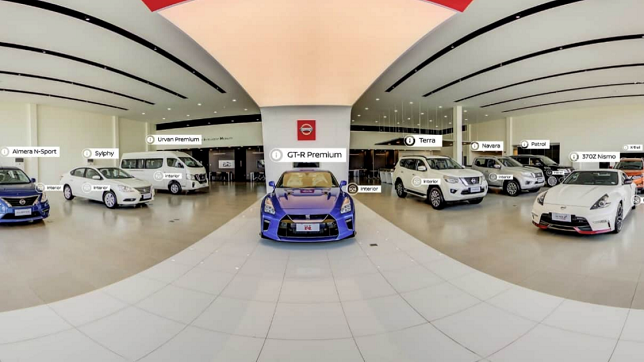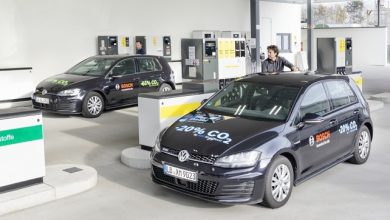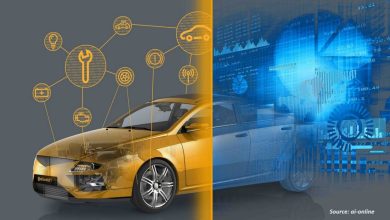Emerging Technologies in Automotive Sector

Emerging Technologies in Automotive Sector
The automotive industry which is over hundred years old has ever since been working hands-on with emerging technologies for delivering safest, advanced and most comfortable vehicles to it users.
Today, the industry is adopting new technologies such as the Internet of Things (IoT), artificial intelligence (AI), machine learning (ML) and more, are is exploring their applications in the automotive sector. With the accelerated digitization of the world, the automotive industry evolve faster in the coming years. Mentioned below are some ways technology is changing the automotive industry:
Digital marketing and sales
The COVID-19 outbreak made us give up many habits but also gave rise to new trends. Automotive companies have moved towards providing a digital platform, which makes way for an immersive and seamless digital experience using virtual and augmented reality.
Online sales of automotive vehicles have already been implemented by large automobile institutes to provide their customers with a superior experience of buying and selling cars. But it came to effect during the coronavirus pandemic. It will definitely minimize physical interactions. It includes the usage of VR (Virtual Reality), IoT (Internet of Things) and AR (Augmented Reality) to implement the latest technologies including the use of multi-hybrid cloud network architectures.
In May 2020, Nissan introduced its digital sales initiatives in India to promote customer engagement through online platforms and minimize physical interactions. ‘Nissan Virtual Showroom’ allows customers to take a 360-degree tour of the brand’s vehicles and explore their features. Users can take a walk around of the exteriors also have a look inside the vehicles’ cabins.
Mahindra & Mahindra Ltd. also launched its ‘Bring the Showroom Home’, a portable, mobile based, interactive Virtual Reality experience. In this the customer will get a 360 degree, all-encompassing and immersive virtual showroom experience. It was part of a series of initiatives under Mahindra’s Digital Transformation Strategy.
Many automobile companies provide a digital experience of their products with the use of AR or VR. For example, Honda Cars launched their virtual showroom which allows customers to interact with the digital version of a car by clicking on various parts. MG Motor India opened its Digital Studio with no car on display in Bengaluru. Amid the outbreak of Coronavirus, India Yamaha Motor has launched an online sales platform in India to drive more sales. Recently, Hero MotoCorp has started a virtual showroom for its scooters and bikes in India.


Biometric Seat Technology
Biometric technology began with a fingerprint recognition system to unlock smartphones, rapidly evolving into facial and iris recognition over the years.
Now Biometric technology is gaining attention as a next-generation technology that not only improves security but also improves the quality of life for convenience and health care. This is the reason that automotive industry is actively introducing biometric technologies in the form of biometric seats.
Biometric Seat works through a series of highly reactive sensors which are able to monitor the driver’s breathing rate, heart rate and body temperature. By using this information, the car can send out warnings if it calculates that the driver is too stressed or tense to be behind the wheel. These sensors are located in the steering wheel and seat belts, which triggers automatic speed limit, audio warning, and ability to dial the emergency services.
Rise in adoption of artificial intelligence technology and integration of infotainment systems in vehicles are likely to propel the automotive biometric seat technology market across the globe. Major vehicle manufacturers and technology providers are investing to develop biometrics for several different use cases, from personalization to driver monitoring to vehicle access. Jaguar Land Rover is working to develop a facial recognition system to adjust vehicle settings with facial expressions. Hyundai Mobis has announced the development of a Driver State Warning (DSW) system with biometric facial recognition and eye tracking to prevent traffic accidents caused by careless driving. in 2011. Mitsubishi Electric Corporation introduced an EMIRAI car at the Tokyo Motor Show. Infrared technology enables biometric seats to measure the heart rate of the driver through the sensors equipped in the seats.

Firmware Over the Air (FOTA) Update
FOTA, or firmware over-the-air, is a technology that enables firmware downloads and updates for specific electronic control units (ECUs) inside a car. As the number of ECUs in vehicles increases, the sharing of diagnostic and operational data from on-board systems and components reduces costs of recall car manufacturers, increases product quality and operational efficiency, as well as deliver post-sale vehicle performance and feature enhancements.
For example, it can upgrade vehicles’ steering systems, make driving operation easier, upgrade the response of the accelerator pedal, make acceleration more linear and comfortable, and more. Before the Tesla Model 3 went on the market, there was a problem with its braking. The braking distance of 100 km / h was 46 m. Following the subsequent OTA upgrade, the braking distance was shortened to 6 meters, greatly improving safety while driving.

Predictive Maintenance
Vehicle breakdown is one of the major causes of road accidents. These breakdowns occur due to human negligence in the timely service and maintenance of vehicles. Predictive maintenance is essentially a technique of collecting data through tools to predict possible defects in an automotive device before it fails. Predictive maintenance is fueled by artificial intelligence and machine learning.
Manufacturers are implementing AI and ML algorithms to automate the vehicle’s installation process, including its infotainment system and its application preferences. This makes vehicles new IoT devices that connect to smartphones or wearable devices. Machine learning models are trained with real-time and historical data associated with the device’s operation. This training enables the underlying algorithm to estimate an anomaly that may occur in the future accurately. Equipment maintenance activities can be scheduled to prevent its failure.
The most important examples of predictive maintenance in the auto industry can be found in vehicle manufacturing and car maintenance. The use of AI in vehicle manufacturing facilitates the reduction of manufacturing costs.
Machine learning also empowers a vehicle to provide timely maintenance recommendations to owners. For example, vehicle sensors collect data on various phenomena such as friction, noise or gradual overheating of parts. These are the kinds of issues that can slowly break a vehicle’s part completely. Machine learning algorithms efficiently record these events and analyze the frequency of their occurrence. Subsequently, it predicts that part of the vehicle should be upgraded / serviced to avoid a complete breakdown in the future.

Vehicles as IoT Devices
Vehicles have been connected for years, in ways that seem routine until now. They seamlessly link to smartphones, register real-time traffic alerts, stream Spotify playlists, and offer emergency roadside assistance at the touch of a button. Indeed, in the early days of the Internet, automakers started connecting vehicles with information streams. When it comes to connecting drivers and technology, the auto industry has a longer and richer track record than any other sector.
The IoT provides a great potential for interconnectivity, linking smart vehicles into a network. IoT technologies are used to create innovative and advanced solutions in the automotive sector, including connected car solutions, Advanced Driver-Assistance Systems (ADAS), in-vehicle infotainment systems, navigation & telematics solutions, predictive maintenance solutions, Vehicle-to-Vehicle (V2V) applications, Vehicle to Infrastructure (V2I) applications, and Vehicle to Everything (V2X) communication applications.
IoT use cases in Automotive Sector:
- Fleet Management: The implementation of IoT in automotive sector has brought a huge development in the field of fleet management. Nowadays trucks are integrated with weight measurement, location tracking, and many other sensors.
- Connected Cars: The idea of connected cars is not new. Connected cars enable fast transmission of data and increase the response time of drivers through enhanced vehicle communication. Based on the vehicle’s connection with various objects, the CV2X is sub-divided into four categories: Vehicle to vehicle (V2V), Vehicle to infrastructure (V2I), Vehicle to pedestrians (V2P) and Vehicle to network (V2N).
- Automotive Maintenance System: IoT automotive maintenance system helps a person to take necessary steps to prevent its car parts from sudden breakdown. Like a vehicle’s dashboard indicators, this system alerts the driver to potential malfunctions.
- Autonomous Vehicles: IoT-transmitted semi-autonomous cars make on-spot decisions while controlling vehicle operation to avoid an accident and reduce the load from the driver. With the accessibility of different sensors and cameras, the cars are integrated with the IoT system to reduce human error and make driving more comfortable and safe.
- In-vehicle Infotainment and Telematics: In-car Wi-Fi capabilities have enabled telematics facilities to be IoT-based automotive. Telematics refers to the long transmission of computerized data. Using vehicle telematics, a car owner can keep an eagle eye on their vehicle, even from remote locations.
- Road Condition Analytics and Navigation: Road condition analysis and navigation assistance is one of the most exciting use cases of IoT in the automotive domain. Smartphone applications, powered by AI, can detect the status of roads in real-time. It enables the driver to be updated on accidents, road closures, speed limits, construction work, and more. Smartphone apps are also integrated with a navigation feature. It helps guide the driver to their destination while providing the most optimal path based on real-time road conditions and traffic.
Internet of Things along with other attention-seeking technologies is transforming the complete automotive industry. The number of IoT applications in the automotive sector is increasing day by day. With the rise in the technology of the Internet of Things, more sophisticated automotive use cases will pop up that will completely change the way we interact with our vehicles.
Advanced Motor Control
Modern vehicles are loaded with dedicated motor-control systems that drive all types of fans, pumps, compressors, and servomechanisms. Increased desire for maximum efficiency and control has led engineers to move beyond traditional scalar control systems to more sophisticated digital vector control algorithms capable of delivering full torque with acceleration and deceleration at precisely manageable rates.
Many cost-effective solutions have been developed, which still provide maximum control capability and enable engineers to harness the power of advanced vector control methods. NXP Semiconductors, Infineon, Embitel, Servotronix, Schneider Electric are some of the global solution providers. However, advanced motor control is a technical trend that provides a better driver experience.
Smart Parking
The smart parking industry is continuously evolving as an increasing number of cities struggle with traffic congestion and insufficient parking availability.
While the implementation of sensor technologies to develop smart parking continues, a wide variety of other technological innovations are also enabling adaptable systems, including cameras, wireless communications, data analytics, induction loops, smart parking meters, and advanced algorithms.
The IoT system of communicative devices enables drivers looking for parking spaces to see, in real time, if and where there are vacant spaces. Developing from a system in which drivers can arrive at multi-story parking lots and see red or green lights above the spaces, recent IoT technology has even more potential.
Automation technology in cars and parking lots is also significantly effective. In Boulder, Colorado, for example, parking provider ParkPlus have installed a fully-automated parking system in a fixed development. The technology installed here uses robotics to park vehicles. Upon entry, a vehicle is scanned with lasers, and as a moving platform a robotic valet lifts the vehicle and transports it to a parking space.
Leading smart cities identify that smart parking can be leveraged to park cars in the future. The AV fleet is expected to make a general change in the way cars are used, affecting how often and where future vehicles will be parked.

Conclusion:
There you have it, some of the advantageous technologies into cars today. The convergence of customer demands, and connectivity is revolutionising the automobile industry to bring more technological changes in the next decade. Vehicles have also started providing Internet connection to passengers. Innovation and creativity are the biggest priority of automobile brands to improve customer satisfaction and sales. With the world being digital, automobiles are also using the opportunity to integrate smart technologies into vehicles that serve to increase your ease of use.
Source:
https://www.biz4intellia.com/blog/iot-applications-in-automotive-industry/
https://www.fpt-software.com/5-technology-trends-driving-automotive-industry-forward/

Richa Tyagi
Editorial Team Member
Telematics Wire
Published in Telematics Wire




